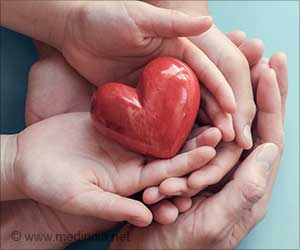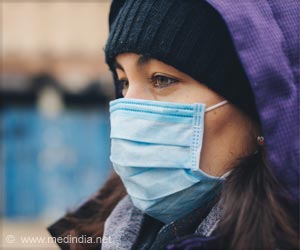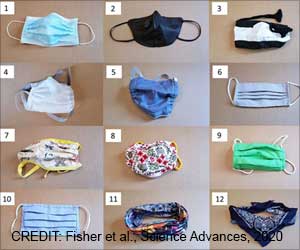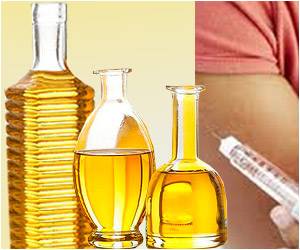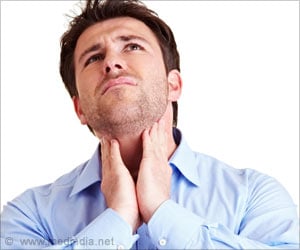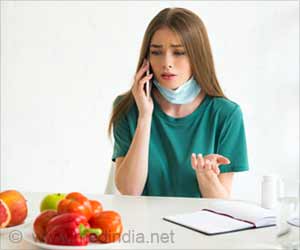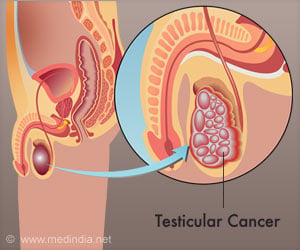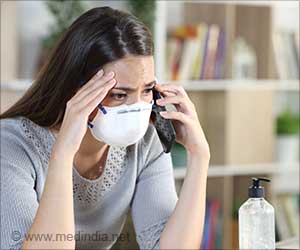Swine Flu
Clinical Management Protocol and Infection Control Guidelines
Guidelines on Infection control Measures
Infection control measures would be targeted according to the risk profile as follows:
1. Health facility managing the human cases of avian influenza
1.1 During Pre Hospital Care
Standard precautions are to be followed while transporting patient to a health-care facility. The patient should also wear a three layer surgical mask.
Aerosol generating procedures should be avoided during transportation as far as possible.
The personnel in the patient’s cabin of the ambulance should wear full complement of PPE including N95 masks, the driver should wear three layered surgical mask.
Once the patient is admitted to the hospital, the interior and exterior of the ambulance and reusable patient care equipment needs to be sanitized using sodium hypochlorite / quaternary ammonium compounds.
Recommended procedures for disposal of waste (including PPE used by personnel) generated in the ambulance while transporting the patient should be followed.
1.2 During Hospital Care
The patient should be admitted directly to the isolation facility and continue to wear a three layer surgical mask. The identified medical, nursing and paramedical personnel attending the suspect/ probable / confirmed case should wear full complement of PPE (including N95 mask). If splashing with blood or other body fluids is anticipated, a water proof apron should be worn over the PPE.
Aerosol-generating procedures such as endotracheal intubation, nebulized medication administration, induction and aspiration of sputum or other respiratory secretions, airway suction, chest physiotherapy and positive pressure ventilation should be performed by the treating physician/ nurse wearing full complement of PPE with N95 respirator on.
Sample collection and packing should be done under full cover of PPE.
Perform hand hygiene before and after patient contact and following contact with contaminated items, whether or not gloves are worn.
Until further evidence is available, infection control precautions should continue in an adult patient for 7 days after resolution of symptoms and 14 days after resolution of symptoms for children younger than 12 years because of longer period of viral shedding expected in children. If the patient insists on returning home, after resolution of fever, it may be considered, provided the patient and household members follow recommended infection control measures and the cases could be monitored by the health workers in the community.
The virus can survive in the environment for variable periods of time (hours to days). Cleaning followed by disinfection should be done for contaminated surfaces and equipments.
The virus is inactivated by a number of disinfectants such as 70% ethanol, 5% benzalkonium chloride (Lysol) and 10% sodium hypochlorite. Patient rooms/areas should be cleaned at least daily and finally after discharge of patient. In addition to daily cleaning of floors and other horizontal surfaces, special attention should be given to cleaning and disinfecting frequently touched surfaces. To avoid possible aerosolization of the virus, damp sweeping should be performed. Horizontal surfaces should be dusted by moistening a cloth with a small amount of disinfectant.
Clean heavily soiled equipment and then apply a disinfectant effective against influenza virus (mentioned above) before removing it from the isolation room/area. If possible, place contaminated patient-care equipment in suitable bags before removing it from the isolation room/area.
When transporting contaminated patient-care equipment outside the isolation room/area, use gloves followed by hand hygiene. Use standard precautions and follow current recommendations for cleaning and disinfection or sterilization of reusable patient-care equipment.
All waste generated from influenza patients in isolation room/area should be considered as clinical infectious waste and should be treated and disposed in accordance with national regulations pertaining to such waste. When transporting waste outside the isolation room/area, gloves should be used followed by hand hygiene.
Annexure I
Case Definition
A suspected case of swine influenza A (H1N1) virus infection is defined as a person with acute febrile respiratory illness (fever = 38 0 C) with onset.:
within 7 days of close contact with a person who is a confirmed case of swine influenza A (H1N1) virus infection, or within 7 days of travel to community where there are one or more confirmed swine influenza A(H1N1) cases, or resides in a community where there are one or more confirmed swine influenza cases.
A probable case of swine influenza A (H1N1) virus infection is defined as a person with an acute febrile respiratory illness who: is positive for influenza A, but unsubtypable for H1 and H3 by influenza RT-PCR or reagents used to detect seasonal influenza virus infection, or is positive for influenza A by an influenza rapid test or an influenza immunofluorescence assay (IFA) plus meets criteria for a suspected case individual with a clinically compatible illness who died of an unexplained acute respiratory –illness who is considered to be epidemiologically linked to a probable or confirmed case.
A confirmed case of swine influenza A (H1N1) virus infection is defined as a person with an acute febrile respiratory illness with laboratory confirmed swine influenza A (H1N1) virus infection at WHO approved laboratories by one or more of the following tests:
Real Time PCR
viral culture
Four-fold rise in swine influenza A (H1N1) virus specific neutralizing antibodies.
Annexure II
Standard Operating Procedures on Use of PPE
Personal Protection Equipments
PPE reduces the risk of infection if used correctly. It includes:
- Gloves (nonsterile),
- Mask (high-efficiency mask) / Three layered surgical mask,
- Long-sleeved cuffed gown,
- Protective eyewear (goggles/visors/face shields),
- Cap (may be used in high risk situations where there may be increased aerosols),
- Plastic apron if splashing of blood, body fluids, excretions and secretions is anticipated.
-
 Googles
Googles
-
 N-95 Mask
N-95 Mask
-
 Gown
Gown
-
 Triple Layer Mask
Triple Layer Mask
-
 Gloves
Gloves
-
 Shoe Covers
Shoe Covers
The PPE should be used in situations were regular work practice requires unavoidable, relatively closed contact with the suspected human case / poultry.
Correct procedure for applying PPE in the following order:
1.Follow thorough hand wash
2.Wear the coverall.
3.Wear the goggles/ shoe cover/and head cover in that order.
4.Wear face mask
5.Wear gloves
The masks should be changed after every six to eight hours.
Remove PPE in the following order:
Guidelines/ operating procedures for infection control practices
1. Infection control measures at Individual level
1.1 Hand Hygiene
Hand hygiene is the single most important measure to reduce the risk of transmitting infectious organism from one person to other.
Hands should be washed frequently with soap and water / alcohol based hand rubs/ antiseptic hand wash and thoroughly dried preferably using disposable tissue/ paper/ towel.
After contact with respiratory secretions or such contaminated surfaces.
Any activity that involves hand to face contact such as eating/ normal grooming / smoking etc.
Steps of hand washing
Correct procedure for applying PPE in the following order:
1.Follow thorough hand wash
2.Wear the coverall.
3.Wear the goggles/ shoe cover/and head cover in that order.
4.Wear face mask
5.Wear gloves
The masks should be changed after every six to eight hours.
Remove PPE in the following order:
- Remove gown (place in rubbish bin).
- Remove gloves (peel from hand and discard into rubbish bin).
- Use alcohol-based hand-rub or wash hands with soap and water.
- Remove cap and face shield (place cap in bin and if reusable place face shield in container for decontamination).
- Remove mask - by grasping elastic behind ears – do not touch front of mask
- Use alcohol-based hand-rub or wash hands with soap and water.
- Leave the room.
- Once outside room use alcohol hand-rub again or wash hands with soap and water.
Guidelines/ operating procedures for infection control practices
1. Infection control measures at Individual level
1.1 Hand Hygiene
Hand hygiene is the single most important measure to reduce the risk of transmitting infectious organism from one person to other.
Hands should be washed frequently with soap and water / alcohol based hand rubs/ antiseptic hand wash and thoroughly dried preferably using disposable tissue/ paper/ towel.
After contact with respiratory secretions or such contaminated surfaces.
Any activity that involves hand to face contact such as eating/ normal grooming / smoking etc.
Steps of hand washing
-
 Step 1. Wash palms and fingers
Step 1. Wash palms and fingers
-
 Step 2. Wash back of hands
Step 2. Wash back of hands
-
 Step 3. Wash fingers and knuckles
Step 3. Wash fingers and knuckles
-
 Step 4. Wash thumbs
Step 4. Wash thumbs
-
 Step 5. Wash fingertips
Step 5. Wash fingertips
-
 Step 6. Wash wrists
Step 6. Wash wrists
1.2 Respiratory Hygiene/Cough Etiquette
The following measures to contain respiratory secretions are recommended for all individuals with signs and symptoms of a respiratory infection.
Cover the nose/mouth with a handkerchief/ tissue paper when coughing or sneezing; Use tissues to contain respiratory secretions and dispose of them in the nearest waste receptacle after use; Perform hand hygiene (e.g., hand washing with non-antimicrobial soap and water, alcohol-based hand rub, or antiseptic hand wash) after having contact with respiratory secretions and contaminated objects/materials
1.3 Staying away
Stay away from poultry. Keep them secure in cages. Keep children out of reach.
Wash hands if in contact with poultry or poultry products.
Stay at least one metre away from a person having cough or sneeze.
1.4 Use of mask
As there is no efficient human to human transmission in phase III, masks are not recommended for individuals or community. As a matter of abundant precaution, PUI/ suspected cases managed at home and there family contacts are trained on using three layered surgical masks.
2. Infection control measures at health facility
2.1 Droplet Precautions:
Advise healthcare personnel to observe Droplet Precautions (i.e., wearing a surgical or procedure masks for close contact), in addition to Standard Precautions, when examining a patient with symptoms of a respiratory infection, particularly if fever is present. These precautions should be maintained until it is determined that the cause of symptoms is not an infectious agent that requires Droplet Precautions.
2.2 Visual Alerts
Post visual alerts (in appropriate languages) at the entrance to outpatient facilities (e.g., emergency departments, physician offices, outpatient, clinics) instructing patients and persons who accompany them (e.g., family, friends) to inform healthcare personnel of symptoms of a respiratory infection when they first register or care and to practice Respiratory Hygiene/Cough Etiquette.
2.3 Use of PPE
The medical, nurses and paramedics attending the suspect/ probable / confirmed case should wear full complement of PPE (Annexure-IX).
Use N-95 masks during aerosol-generating procedures.
Perform hand hygiene before and after patient contact and following contact with contaminated items, whether or not gloves are worn.
Sample collection and packing should be done under full cover of PPE.
2.4 Decontaminating contaminated surfaces, fomites and equipments
Cleaning followed by disinfection should be done for contaminated surfaces and equipments. use phenolic disinfectants, quaternary ammonia compounds , alcohol or sodium hypochlorite. Patient rooms/areas should be cleaned at least daily and terminally after discharge. In addition to daily cleaning of floors and other horizontal surfaces, special attention should be given to cleaning and disinfecting frequently touched surfaces. To avoid possible aerosolization of AI virus, damp sweeping should be performed. Clean heavily soiled equipment and then apply a disinfectant effective against influenza virus before removing it from the isolation room/area. When transporting contaminated patient-care equipment outside the isolation room/area, use gloves followed by hand hygiene. Use standard precautions and follow current recommendations for cleaning and disinfection or sterilization of reusable patient-care equipment.
2.5 Guidelines for waste disposal
All the waste has to be treated as infectious waste and decontaminated as per standard procedures Articles like swabs/gauges etc are to be discarded in the Yellow coloured autoclavable biosafety bags after use, the bags are to be autoclaved followed by incineration of the contents of the bag. Waste like used gloves, face masks and disposable syringes etc are to be discarded in Blue/White autoclavable biosafety bags which should be autocalaved/microwaved before disposal All hospitals and laboratory personnel should follow the standard guidelines (Biomedical waste management and handling rules, 1998) for waste management.
The following measures to contain respiratory secretions are recommended for all individuals with signs and symptoms of a respiratory infection.
Cover the nose/mouth with a handkerchief/ tissue paper when coughing or sneezing; Use tissues to contain respiratory secretions and dispose of them in the nearest waste receptacle after use; Perform hand hygiene (e.g., hand washing with non-antimicrobial soap and water, alcohol-based hand rub, or antiseptic hand wash) after having contact with respiratory secretions and contaminated objects/materials
1.3 Staying away
Stay away from poultry. Keep them secure in cages. Keep children out of reach.
Wash hands if in contact with poultry or poultry products.
Stay at least one metre away from a person having cough or sneeze.
1.4 Use of mask
As there is no efficient human to human transmission in phase III, masks are not recommended for individuals or community. As a matter of abundant precaution, PUI/ suspected cases managed at home and there family contacts are trained on using three layered surgical masks.
2. Infection control measures at health facility
2.1 Droplet Precautions:
Advise healthcare personnel to observe Droplet Precautions (i.e., wearing a surgical or procedure masks for close contact), in addition to Standard Precautions, when examining a patient with symptoms of a respiratory infection, particularly if fever is present. These precautions should be maintained until it is determined that the cause of symptoms is not an infectious agent that requires Droplet Precautions.
2.2 Visual Alerts
Post visual alerts (in appropriate languages) at the entrance to outpatient facilities (e.g., emergency departments, physician offices, outpatient, clinics) instructing patients and persons who accompany them (e.g., family, friends) to inform healthcare personnel of symptoms of a respiratory infection when they first register or care and to practice Respiratory Hygiene/Cough Etiquette.
2.3 Use of PPE
The medical, nurses and paramedics attending the suspect/ probable / confirmed case should wear full complement of PPE (Annexure-IX).
Use N-95 masks during aerosol-generating procedures.
Perform hand hygiene before and after patient contact and following contact with contaminated items, whether or not gloves are worn.
Sample collection and packing should be done under full cover of PPE.
2.4 Decontaminating contaminated surfaces, fomites and equipments
Cleaning followed by disinfection should be done for contaminated surfaces and equipments. use phenolic disinfectants, quaternary ammonia compounds , alcohol or sodium hypochlorite. Patient rooms/areas should be cleaned at least daily and terminally after discharge. In addition to daily cleaning of floors and other horizontal surfaces, special attention should be given to cleaning and disinfecting frequently touched surfaces. To avoid possible aerosolization of AI virus, damp sweeping should be performed. Clean heavily soiled equipment and then apply a disinfectant effective against influenza virus before removing it from the isolation room/area. When transporting contaminated patient-care equipment outside the isolation room/area, use gloves followed by hand hygiene. Use standard precautions and follow current recommendations for cleaning and disinfection or sterilization of reusable patient-care equipment.
2.5 Guidelines for waste disposal
All the waste has to be treated as infectious waste and decontaminated as per standard procedures Articles like swabs/gauges etc are to be discarded in the Yellow coloured autoclavable biosafety bags after use, the bags are to be autoclaved followed by incineration of the contents of the bag. Waste like used gloves, face masks and disposable syringes etc are to be discarded in Blue/White autoclavable biosafety bags which should be autocalaved/microwaved before disposal All hospitals and laboratory personnel should follow the standard guidelines (Biomedical waste management and handling rules, 1998) for waste management.


